Cost Analysis and Feasibility Study of Xanthan Gum Manufacturing Plant: A Cost Model Approach
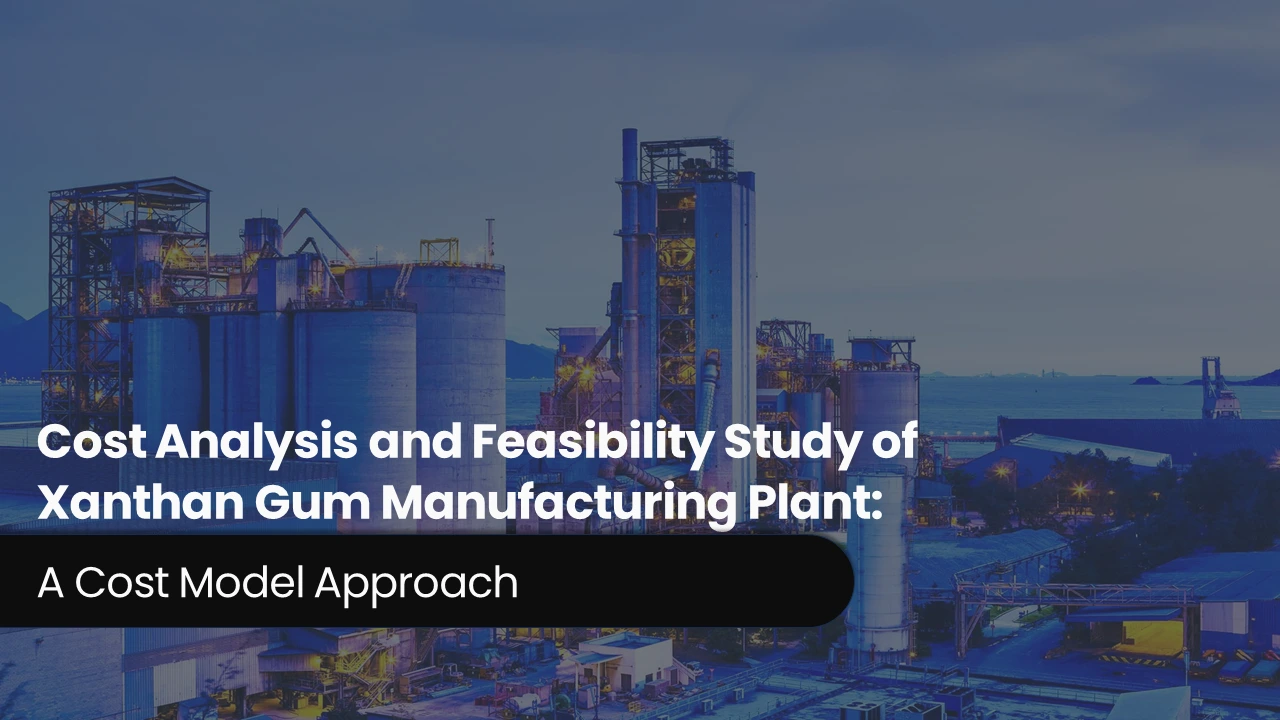
Xanthan gum is a food additive that is produced by fermenting simple sugar using bacteria. It quickly disperses and creates a viscous and stable solution when added to a liquid for providing a thickness or stabilizing effect to a product. It assists in improving the texture, flavour, consistency, appearance, and shelf life of a product. It aids in preventing food products from separating and allowing them to flow smoothly and can lower blood sugar levels among individuals. It also reduces cholesterol levels, slows digestion, supports weight loss management, and treats dry mouth problems. According to an IMARC study, the global xanthan gum market was valued at USD 654.76 Million in 2024. Looking ahead, the market is expected to grow at a CAGR of approximately 6.10% from 2025 to 2033, reaching a projected value of USD 1,163.86 Million by 2033. One of the main factors driving the market's expansion at present is the pharmaceutical industry's growing use of xanthan gum to make diabetes medications. Additionally, the industry is expanding due to the growing use of xanthan gum in paints and wallpaper glue to preserve thickness. Besides that, the market is also experiencing growth since there is increasing demand for the utilization of xanthan gum in various types of baked goods for softness and lightness. Also, the increasing usage of xanthan gum in cosmetic products to retain moisture within the skin and to lower the likelihood of wrinkles, fine lines, and patches in people is creating a positive market outlook. Accordingly, investors in the oil and gas sector are seeing profitable growth prospects due to the growing adoption of xanthan gum as an additive in drilling fluids. In addition, the market is expanding due to the growing use of xanthan gum in place of eggs in a variety of food products.
Trending Insights on Xanthan Gum: Latest News and Developments
- In December 2024, BASF obtains key approval for xanthan gum in China. Symbiocell, a plant-based active ingredient intended to calm sensitive skin, has been approved as a new cosmetic component in China, marking a major regulatory victory for BASF's personal care division.
- In September 2024, Jungbunzlauer announced that it would invest about USD 200 Million to construct an extension for xanthan gum to its current factory in Port Colborne, Ontario.
- In June 2024, The UK xanthan gum mill of hydrocolloid producer CP Kelco has declared that it will close after cost constraints forced it into an unprofitable market. The corporation will have three xanthan gum factories left once the Knowsley factory closes, two of which are in the US and one in China.
Case Study on Cost Model of Xanthan Gum Manufacturing Plant
Objective: One of our clients has approached us to conduct a feasibility study for establishing a mid to large-scale xanthan gum manufacturing plant in Saudi Arabia. We have developed a detailed financial model for the plant's setup and operations. The proposed facility is designed with an annual production capacity of 18,000 tons of xanthan gum annually and will cover a land area of 48,600 square meters.
Manufacturing Process: The first step in making xanthan gum is fermentation, in which the bacteria Xanthomonas campestris is grown in a nutrient-rich medium that contains vital minerals, carbohydrates, and nitrogen sources. The bacteria create the extracellular polysaccharide xanthan gum under regulated circumstances. The broth is sterilised after fermentation is finished to get rid of undesirable bacteria and guarantee purity. Precipitation is then used to recover the xanthan gum, typically by adding alcohol (like isopropanol) to cause the gum to separate from the liquid. After precipitation, surplus water and contaminants are removed using separation methods like centrifugation or filtration to obtain the solid xanthan gum. To reach the required moisture content, the purified xanthan is then dried using spray dryers or other drying techniques. Drying is followed by milling or grinding to produce a fine, homogeneous powder that can be used in industry, quality control and testing to guarantee that the final product meets industry standards, and finally packaging, storage, and distribution for use as a thickening, stabilising, and emulsifying agent in food, pharmaceutical, and industrial applications.
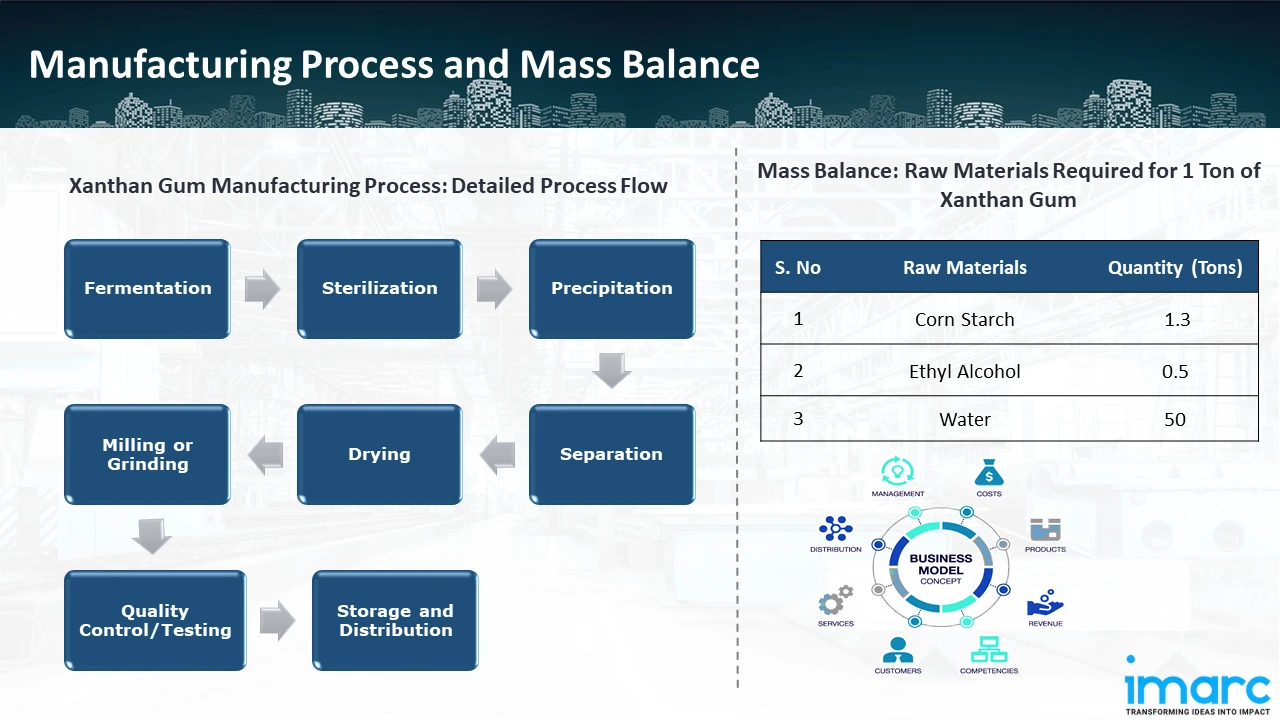
Mass Balance and Raw Material Required: The primary raw materials utilized in the xanthan gum manufacturing plant include corn starch, ethyl alcohol, and water. To produce 1 ton of xanthan gum, around 1.3 tons of corn starch, 0.5 tons of ethyl alcohol, and 50 tons of water is required.
List of Machinery:
The following equipment was required for the proposed plant:
- Batching tank
- Continuous Sterilization System for Seed Tank
- Continuous Sterilization System for Fermentation Tank
- Hydrolysis tank
- Horizontal spiral centrifuge
- Nitrogen source tank
- Primary seed tank
- Secondary seed tank
- Fermentation Tank
- Fermentation Liquid Storage Tank
- Extraction tank
- Extruder
- Dryer
- Mixer
- Grinder
- Grading Screen
- Packer
- Alcohol storage tank
- Centrifugal air compressor
- Air Tank & Air handling system
- Nitrogen preparation system
- Circulating water system
- Automatic control system
- Alcohol distillation system
- Sewage treatment facilities
- BOD wastewater treatment unit
- Boiler & Steam network
- Ints./PA Air compression system
- Chiller unit & 2 Cell Cooling towers
- Complex water storage and pumping station
- F.F system
- Demin-Water unit
- Main Power connection S.S / transformer and Breaker
- Aramco Connection Natural Gas Metering Station
- Pipe-Racks / underground network
- Tank farm
- General Employee Facilities
- HCIS Fence
- Telecommunication & PA system
- Storm Water Network and connection
- Weighting Bridge
- Lab. Equipment and Technical Furniture
- Valves
- Pipes & Fittings
- Analytical apparatus
- Partial automatic control
- Spare Parts
Techno-Commercial Parameter:
- Capital Investment (CapEx): The total capital cost for establishing the proposed xanthan gum manufacturing plant is approximately US$ 123.81 Million. Machinery costs account for 80.4% of the total capital cost, while civil works costs are estimated at around US$ 17.92 Million. The machinery cost for a xanthan gum manufacturing plant constitutes a significant portion of the total capital cost, including the cost of tanks, dryers, mixers, grinders along with other machines. This ensures a robust foundation for safe and efficient plant operations.
- Operating Expenditure (OpEx): In a xanthan gum manufacturing plant, the operating cost for the first year of operations is projected at US$ 39.81 Million. This estimate includes the cost of raw materials, utilities, depreciation, taxes, packing cost, transportation cost, and repairs and maintenance. By the fifth year of operations, the total operational cost is expected to increase by 22.8% compared to the first year, driven by inflation, market fluctuations, and potential rises in the cost of key materials. This growth is due to the changes in the global economy, supply chain disruptions, and increased consumer demand.
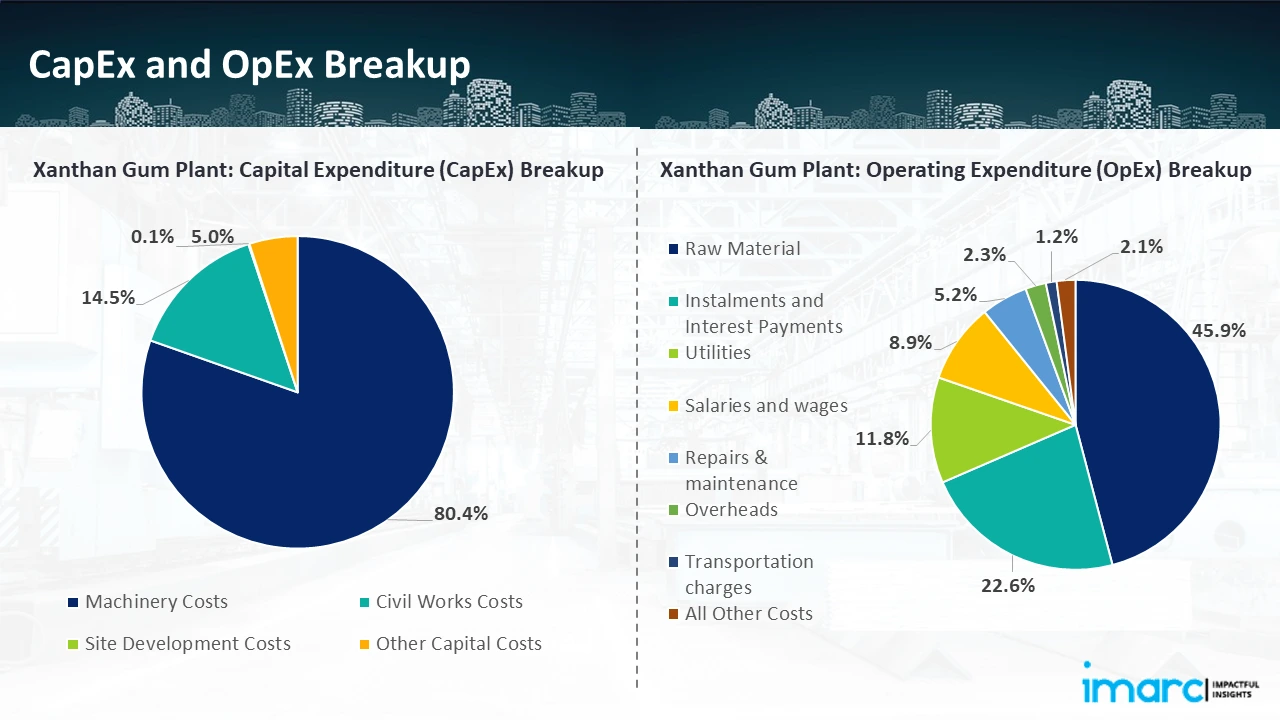
- Profitability Analysis Year on Year Basis: The proposed xanthan gum plant, with a capacity of 18,000 tons xanthan gum annually, achieved an impressive revenue of US$ 65.14 Million in its first year. We assisted our client in developing a detailed cost model, which projects steady growth, with revenue reaching US$ 88.83 Million by Year 5. Gross profit margins improve from 38.9% to 45.0%, and net profit margins rise from 17.4% to 33.2%, highlighting strong financial viability and operational efficiency.
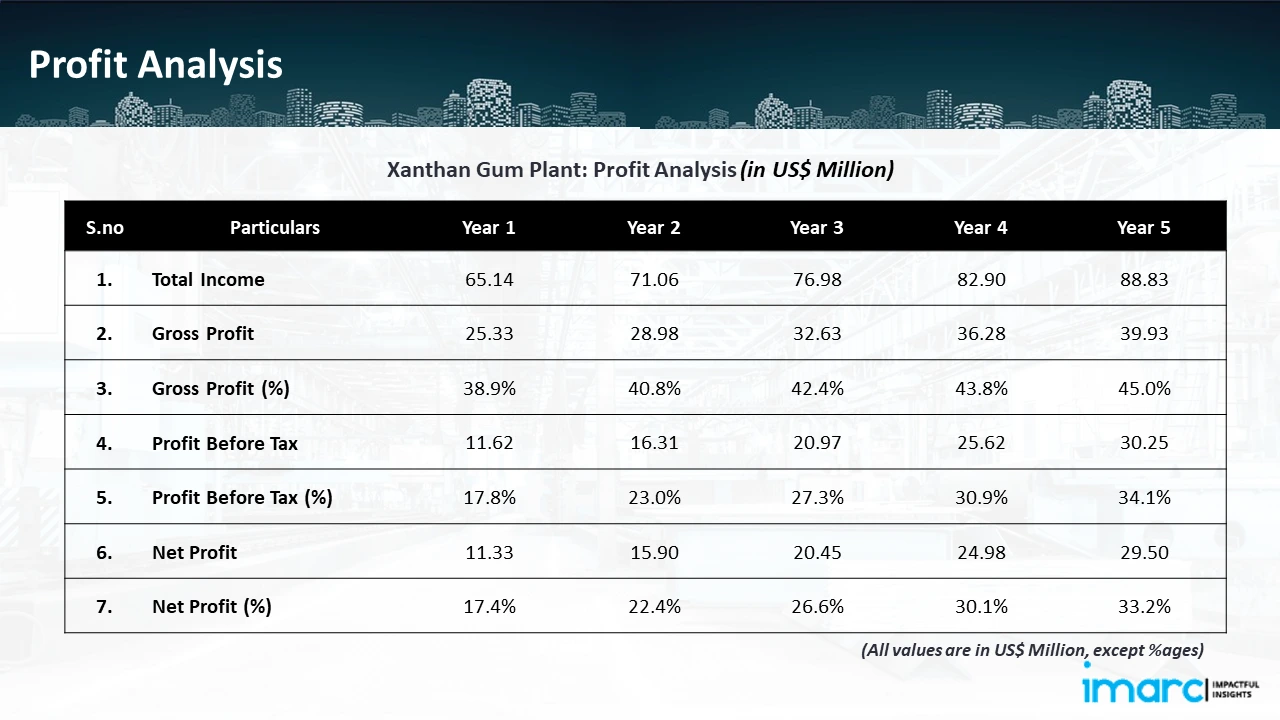
Conclusion
Our xanthan gum manufacturing plant's financial model was meticulously modelled to satisfy the client's requirements. It provided a thorough analysis of production costs including capital expenditures, manufacturing processes, raw materials, and operating costs. The model predicts profitability while accounting for market trends, inflation, and any shifts in the price of raw materials. It was created especially to satisfy the demand of producing 18,000 tonnes of xanthan gum per day. Our commitment to offering precise, client-centered solutions that ensure the long-term success of significant industrial projects by giving the client useful data for strategic decision-making is demonstrated by this comprehensive financial model.
IMARC's Financial Model Expertise: Helping Our Clients Explore Industry Economics
IMARC is a global market research company that offers a wide range of services, including market entry and expansion, market entry and opportunity assessment, competitive intelligence and benchmarking, procurement research, pricing and cost research, regulatory approvals and licensing, factory setup, factory auditing, company incorporation, incubation services, recruitment services, and marketing and sales.
Brief List of Our Services: Market Entry and Expansion
- Market Entry and Opportunity Assessment
- Competitive Intelligence and Benchmarking
- Procurement Research
- Pricing and Cost Research
- Sourcing
- Distribution Partner Identification
- Contract Manufacturer Identification
- Regulatory Approvals, and Licensing
- Factory Setup
- Factory Auditing
- Company Incorporation
- Incubation Services
- Recruitment Services
- Marketing and Sales
Under our factory setup services, we assist our clients in exploring the feasibility of their plants by providing comprehensive financial modeling. Additionally, we offer end-to-end consultation for setting up a plant in India or abroad. Our financial modeling includes an analysis of capital expenditure (CapEx) required to establish the manufacturing facility, covering costs such as land acquisition, building infrastructure, purchasing high-tech production equipment, and installation. Furthermore, the layout and design of the factory significantly influence operational efficiency, energy consumption, and labor productivity, all of which impact long-term operational expenditure (OpEx). So, every parameter is covered in the analysis.
At IMARC, we leverage our comprehensive market research expertise to support companies in every aspect of their business journey, from market entry and expansion to operational efficiency and innovation. By integrating our factory setup services with our deep knowledge of industry dynamics, we empower our clients to not only establish manufacturing facilities but also strategically position themselves in highly competitive markets. Our financial modeling and end-to-end consultation services ensure that clients can explore the feasibility of their plant setups while also gaining insights into competitors' strategies, technological advancements, and regulatory landscapes. This holistic approach enables our clients to make informed decisions, optimize their operations, and align with sustainable practices, ultimately driving long-term success and growth.
Contact Us
Have a question or need assistance? Please complete the form with your inquiry or reach out by emailing us on sales@imarcgroup.com.
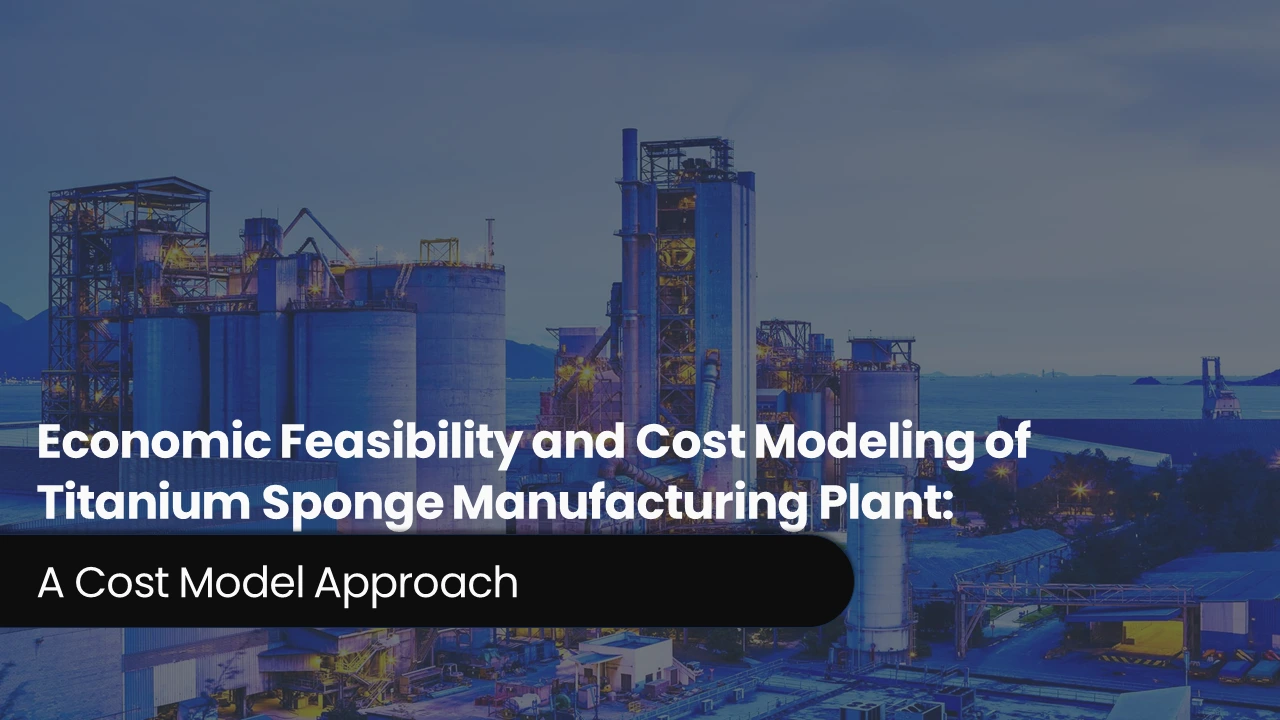
_11zon.webp)